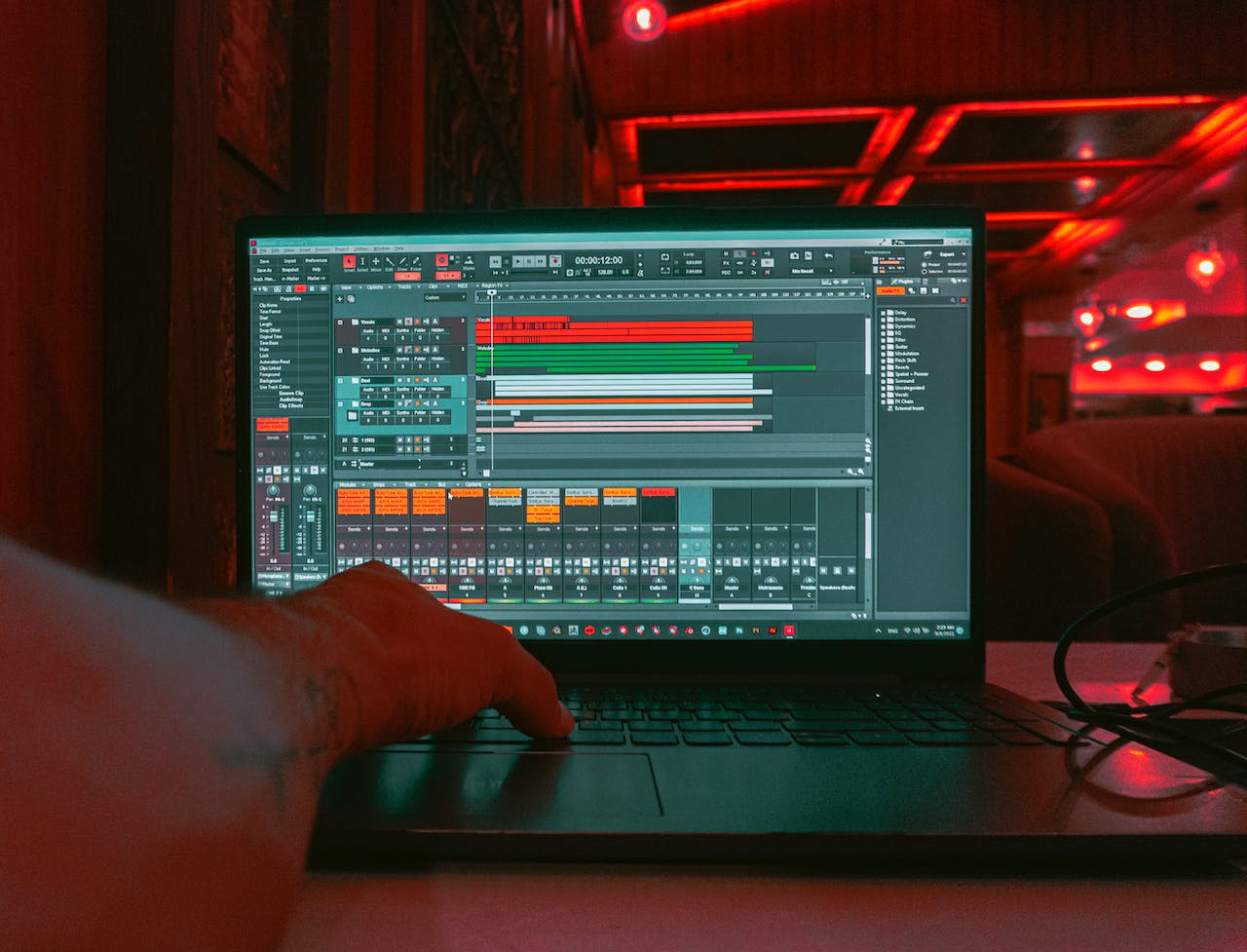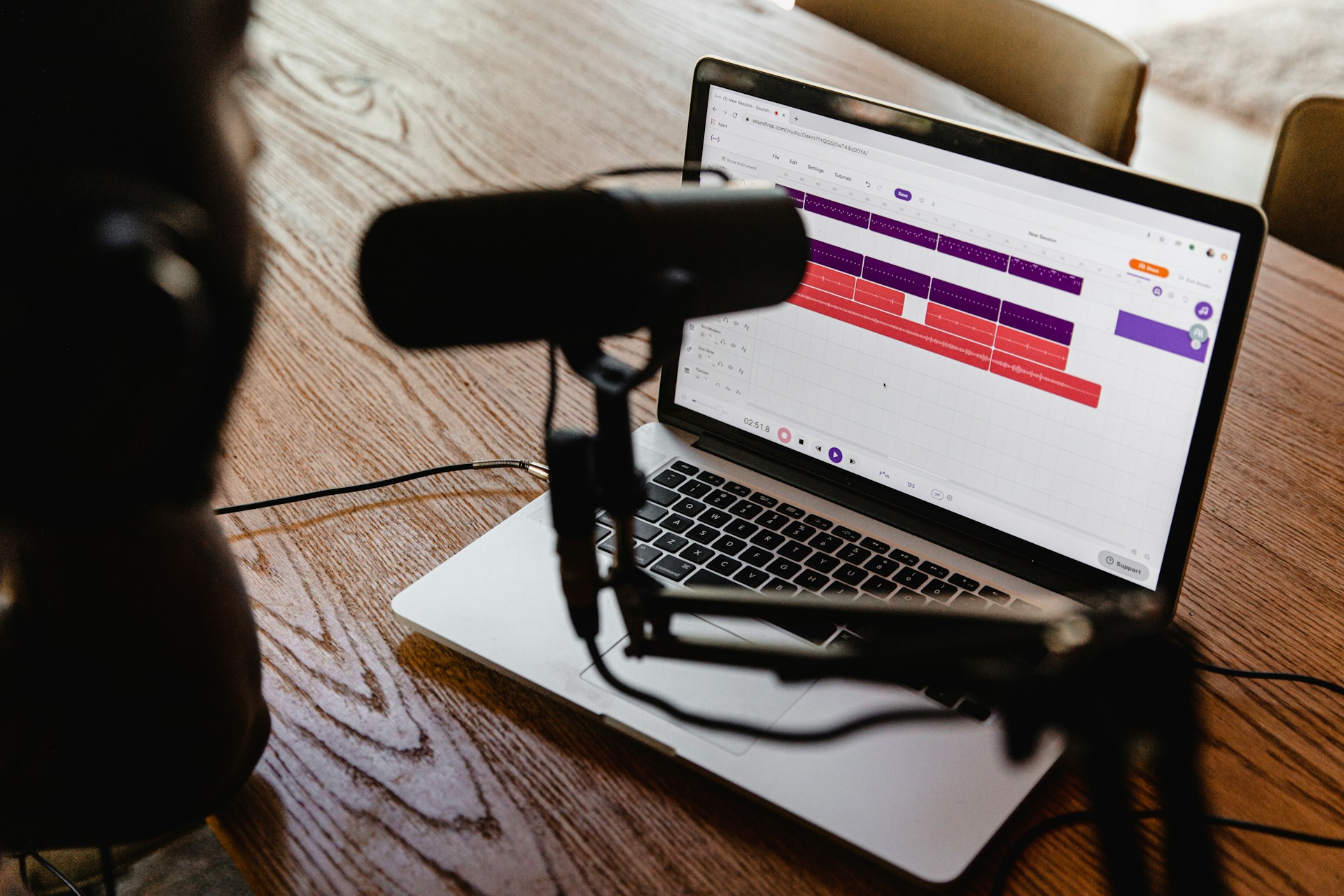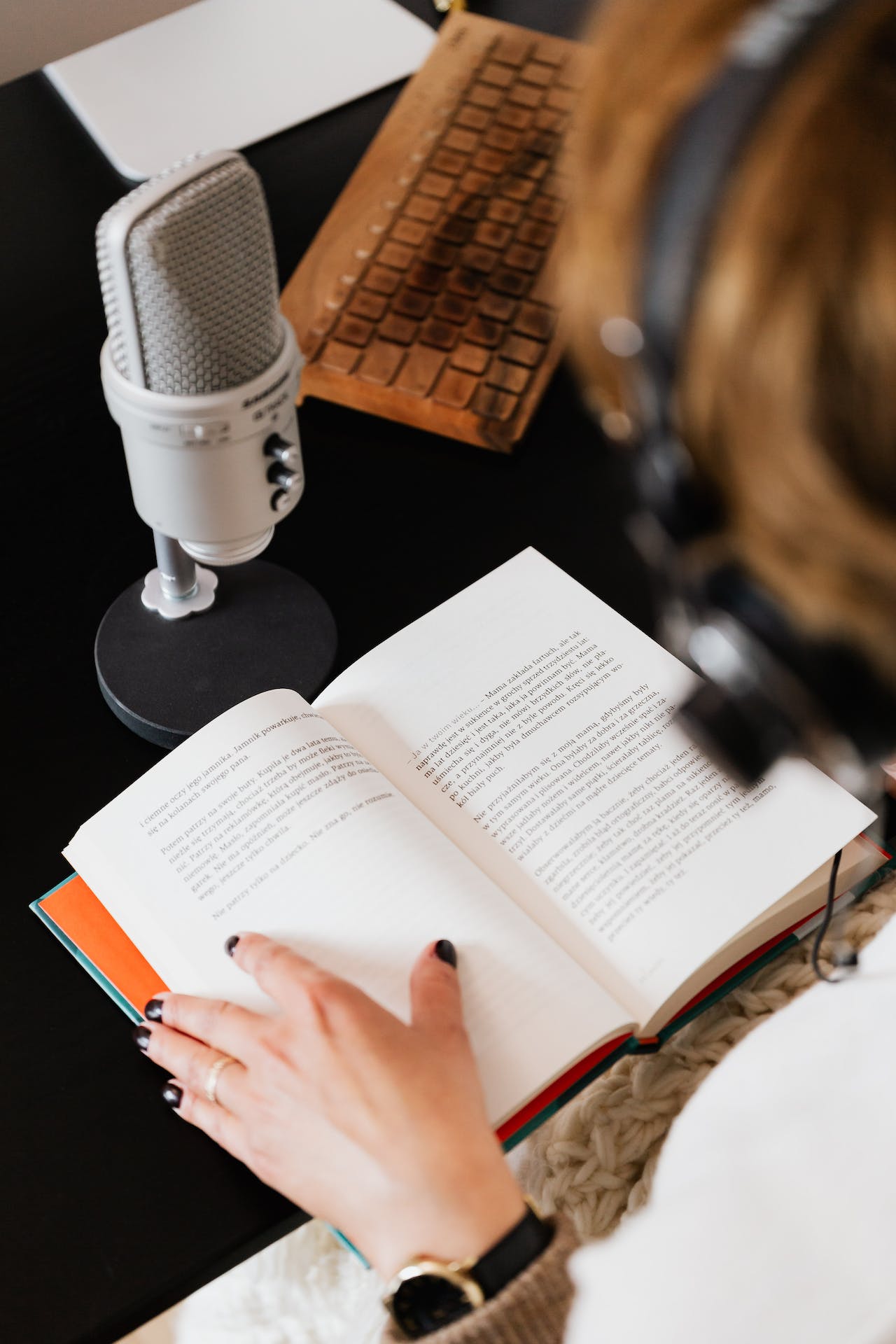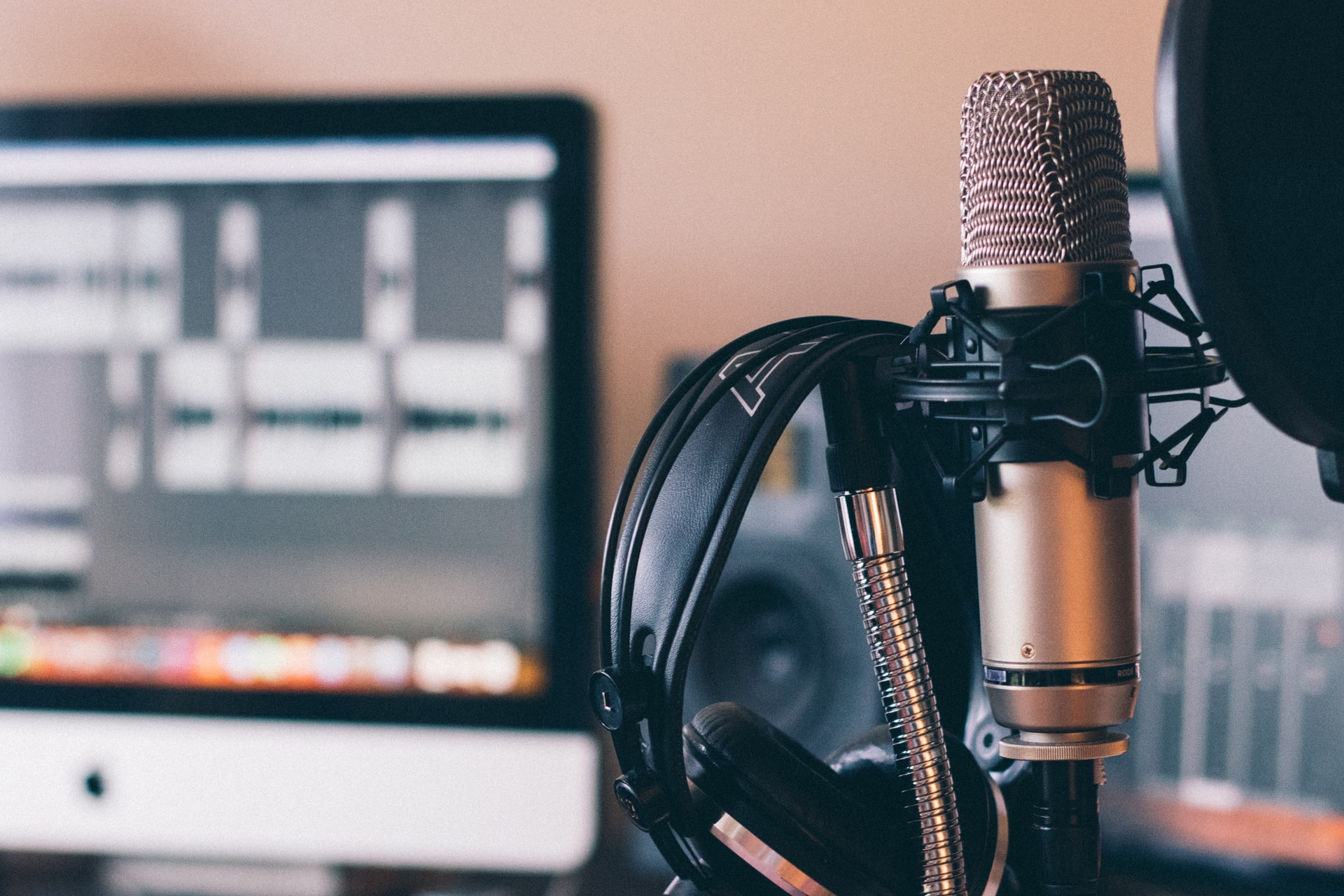Introduction
The world of literature has been witnessing a transformative shift with the ascent of audiobooks. In our fast-paced society where multitasking has become second nature, audiobooks offer a convenient and accessible way to indulge in storytelling, whether it’s during a commute, workout, or while tackling household chores. For authors and narrators alike, the process of recording an audiobook can be a daunting task. In this comprehensive guide, we delve into the art and science of crafting compelling, professional audiobooks. We’ll traverse through the essential techniques that are key to mastering audiobook recording – from setting up your recording space to nuanced vocal performance, and right through to the final stages of production and distribution.
In the spirit of the topic, let's embark on our journey toward mastering audiobook recording, ensuring every spoken word resonates with your listeners and leaves a lasting impression.
The Audiobook Phenomenon
Why Audiobooks are Gaining Popularity
Audiobooks have surged in popularity in recent years, showing no signs of slowing down. Their appeal lies in their convenience; they turn any moment into an opportunity to experience stories and ideas, enriching lives without demanding exclusive attention. According to the Audio Publishers Association, audiobook sales have been increasing consistently year over year, highlighting the medium’s growing market. People are drawn to the personal touch and intimacy that audiobooks provide, as they can absorb content while hearing the nuances of emotion and expression as intended by the author or a skilled narrator.
The Power of a Well-Recorded Audiobook
A well-recorded audiobook can be a revelatory experience. It has the power to transform the written word into a vivid soundscape, with the potential to enhance the storytelling through the narrator’s pace, tone, and emotion. For authors and publishers, a high-quality recording can be a significant market differentiator, often serving as the deciding factor for listeners in a crowded marketplace. The calibre of recording can also influence reviews and ratings, impacting visibility and sales.
Audiobook production, done correctly, has the remarkable ability to breathe new life into a text, creating an immersive experience that captivates the listener's imagination.
Setting the Stage for Success
Before you can dive into narrating, it’s crucial to create the optimal environment and gather the right tools for the job. Here's how you can lay the groundwork for a successful audiobook recording:
Creating a Suitable Recording Environment
Your recording environment is pivotal in determining the quality of your audiobook. To create a professional-sounding project, meticulous attention must be given to soundproofing and room acoustics. Aim to eliminate as much external noise as possible by sealing gaps where sound can leak in and adding sound-absorbing materials to dampen reverberations within the room.
Tips for Soundproofing Your Recording Space:
- Use thick curtains or acoustic foam panels to minimize echo.
- Place rugs or carpets on hard surfaces to absorb sound.
- Seal doors and windows with weatherstripping to keep external noise out.
Essential Equipment for Professional Quality
The quality of your equipment will directly affect the clarity and professionalism of your audiobook.
Must-Have Audio Recording Tools:
- Microphone: A condenser microphone is often preferred for its sensitivity and range.
- Pop Filter: This shields your microphone from the plosive sounds of speech.
- Headphones: Closed-back headphones will help you monitor the audio without bleed-through.
- Audio Interface: Connects your microphone to your computer and ensures good sound quality.
- Recording Software: A reliable Digital Audio Workstation (DAW) is indispensable for recording and editing.
Investing in quality recording equipment will significantly improve your audiobook's end result and provide your listeners with a more enjoyable experience. Do your research and choose gear that matches your production needs and budget, while not compromising on the audio integrity.
Technical Aspects of Audiobook Recording
Understanding the technical side of audiobook recording is as important as having a clear and expressive narration. It’s what brings professional sheen to your project.
Understanding Audiobook Technical Requirements
Every platform that distributes audiobooks has technical requirements that you must adhere to before your work can be published. Here’s what you generally need to know:
Key Technical Specifications for Audiobooks:
- File Format: Most platforms require MP3 format, with specifics about bit rates and sample rates.
- Bit Rate: A higher bit rate typically translates to better quality. Aim for a minimum of 192 kbps.
- Sample Rate: This is the number of samples of audio carried per second. A standard sample rate is 44.1 kHz.
Recording Software Choices
Your choice of Digital Audio Workstation (DAW) plays a critical role in the ease and quality of recording and post-production. Each DAW comes with its own set of features, strengths, and learning curves.

Popular DAW Options for Audiobook Recording:
- Audacity: A free, open-source tool that is perfect for beginners but also has enough depth for more advanced users.
- Adobe Audition: Offers a suite of professional audio editing tools, ideal for those looking for advanced features.
- Reaper: Affordable and fully featured, Reaper allows for extensive customization and supports a wide range of plugins.
When choosing a Digital Audio Workstation (DAW), assess your skill level and project needs. Managing a DAW demands time and technical expertise, potentially leading to significant time investment. Several DAWs offer trial periods, aiding in the selection of user-friendly software. If the complexities of traditional DAWs seem overwhelming, consider Orasyo. Designed for simplicity, Orasyo excels at converting text to audio or video, offering a streamlined alternative.
Unlock your Recording Productivity Power with Orasyo - Try it for Free!
Supercharge your recording sessions efficiency with Orasyo, your ultimate companion that can save you a remarkable 35% of your valuable time.
Elevate your recordings to professional quality swiftly and effortlessly.
Perfect for Audiobooks, Voiceovers, and a myriad of other applications.
Cancel anytime
The Art of Narration
Narration is not just about reading text; it's a performance. Whether you're the author narrating your own work or a voiceover artist bringing someone else's story to life, your narration can make or break an audiobook.
Finding Your Narrator’s Voice
Developing a unique voice as a narrator is essential. Listen to professional narrators and identify what you enjoy about their style. Practice reading aloud, capturing the nuances of the narrative, such as emotional cues and the author's underlying intentions.
Ways to Craft Your Narrative Voice:
- Record and listen back to yourself to identify areas for improvement and strengths in your narrative delivery.
- Work on pronunciation, enunciation, and varying your pitch to avoid a monotonous tone.
- Engage with the text as if you're telling a story to a live audience, bringing a sense of presence and authenticity to your narration.
Characterization and Dialogue
Voicing characters in an audiobook is an art that requires skillful vocal modulation and consistency. Each character should have a distinct voice that reflects their personality traits and background, contributing to the storytelling experience.
Techniques for Effective Characterization:
- Develop a unique voice for each character, taking notes on their traits to maintain consistency.
- Practice switching between characters' voices fluidly during dialogues to enhance listener engagement.
- Use subtle changes in pitch, pace, and accentuation to differentiate characters without being distracting.
Maintaining Listener Engagement
To keep listeners invested, your narration must be dynamic and expressive. Use pacing, inflection, and strategic pauses to build suspense and highlight key moments in the story.
Tips for Engaging Listeners Through Narration:
- Vary your reading speed and volume to reflect the mood of different scenes.
- Employ dramatic pauses to emphasize important plot developments or create tension.
- Use rhythm and melody in your voice to add musicality to the narration, drawing in the listener and creating a more memorable auditory experience.
Paying close attention to the narrative rhythm will keep the story flowing and allow listeners to remain immersed without fatigue. Emotional delivery is crucial; your voice should convey the emotions the characters are feeling, from joy to sorrow, anger to love. The listener should be able to 'hear' the smiles, the tears, and the sighs as if they were their own.
Recording Workflow
Productive recording sessions require both strategic planning and practical techniques. Optimal organization will save time and improve the quality of the final audiobook.
Planning Your Recording Sessions
Audiobook narration is a marathon, not a sprint. It's vital to break the text into manageable sections and establish a recording schedule. This helps in maintaining a consistent voice and energy level throughout the book.

Session Planning Basics:
- Determine how many hours you can comfortably record without straining your voice.
- Organize your recording around the natural breaks in the text, like chapters or sections.
- Keep hydrated and rested to maintain vocal quality.
Recording Techniques and Best Practices
Just as important as the planning are the techniques used during the act of recording. Embracing proven methods will minimize mistakes and render a better product in fewer takes.
Recording Best Practices:
- Mic Positioning: Finding the sweet spot where your voice sounds natural and clear without picking up plosives or excessive sibilance is crucial. Generally, placing the mic slightly off-center from your mouth at a distance of about six inches works well.
- Environment Control: Before starting, do a sound check to ensure no ambient noises are leaking into your recording space. Turn off fans, air conditioning, and mute phones.
- Recording Techniques: Mark your script for pronunciation, pauses, and emphasis. It helps to stand while recording to maintain energy. If you make a mistake, pause, clap to create a spike in the waveform (making it easy to find during editing), and then start the sentence again.
By implementing these techniques, you increase the efficiency of both the recording and editing stages, saving hours of potential post-production work.
Post-Production Mastery
The post-production phase is where your audiobook truly comes together. It’s a meticulous process of editing, mastering, and ensuring the final product is polished and adheres to professional standards.
Editing and Mastering Audiobooks
Editing is the first step in the post-production process. You'll be removing mistakes, optimizing pacing, and ensuring a consistent volume throughout the audiobook. Mastering involves fine-tuning the final file, ensuring it meets the technical requirements for distribution platforms.
Editing Techniques for Audiobooks:
- Noise Reduction: Apply noise reduction techniques to eliminate background hums or hisses.
- Removal of Mistakes: This includes any retakes or unwanted sounds, such as breaths that are too loud or intrusive.
- Consistent pacing: Ensure the tempo of your narration remains steady, editing for unnatural gaps or overly quick transitions that could confuse the listener.
Mastering Best Practices:
- Leveling: Adjust the overall loudness of your recording to meet industry standards, generally aiming for -3dB to -6dB peaks.
- EQ (Equalization): Tweak the frequency balance to ensure your voice comes through clearly and naturally on a variety of playback systems.
- Compression: Use compression to reduce the dynamic range of your recording, ensuring that volume levels are even and no part is too loud or too soft for comfortable listening.
The process of editing and mastering is integral, providing a seamless listening experience that meets the listener's expectations for a professional-quality audiobook.
Adding Music and Sound Effects
In some cases, authors and producers choose to enrich their audiobooks with music and sound effects. This can help set the tone, accentuate certain parts of the story, or designate chapter breaks.
Important Considerations for Adding Audio Elements:
- Relevance: Ensure that any additional audio elements are enhancing the story and not distracting from it.
- Licensing: Always use royalty-free music or obtain the necessary permissions to avoid legal issues with copyrighted material.
Quality Control and Final Touches
Before your audiobook can be unleashed upon eager ears, a thorough quality control process is a must. This ensures that your audiobook not only sounds good but also meets all requirements set forth by audiobook platforms.
Ensuring Audiobook Compliance
Major distributors like Audible, Apple Books, and Google Play Books have strict quality control checks in place. To stand the best chance of passing these with flying colors, your final product must align with their standards.
Audiobook Compliance Checklist:
- Adherence to specified audio file format and bit rate
- Consistent and correct naming of files
- Appropriate lengths of silence at the beginning (0.5 to 1 second) and end (3 to 5 seconds) of each file
Prooflistening: The Final Quality Check
A prooflistener is to audiobooks what a proofreader is to print. This step is often overlooked but is essential for catching errors that may have been missed during editing.
Key Areas for Prooflistening:
- Missed or incorrect edits
- Consistency in character voices
- Ensuring there are no skipped sentences or words
Feedback from a prooflistener can be invaluable, and even experienced audiobook producers benefit from an extra set of ears to catch potential issues. It's a task that requires attention to detail and patience, as they must carefully listen to the entire book, often multiple times, to ensure that the audio quality remains high and the performance is compelling from start to finish.
Preparing for Distribution
Once you have a finished product, it's time to prepare it for the world. The way you package and market your audiobook can greatly influence its success.
Understanding Different Audiobook Platforms
Each audiobook platform has unique requirements and benefits. Some offer exclusive distribution deals, while others allow for a wider release.
Distribution Platform Essentials:
- Exclusive vs. Non-Exclusive: Determine whether you want to place your audiobook on a single platform for potentially higher royalties or distribute it widely for increased exposure.
- Royalty Structure: Understand how royalties are calculated on each platform to make informed decisions about pricing and promotions.
The Audiobook Packaging: Cover Art and Descriptions
Your cover art is the first thing potential listeners will see, and a well-crafted description is what will entice them to purchase.
Tips for Effective Audiobook Packaging:
- Cover Art: Ensure it's professionally designed and conveys the mood or genre of your book.
- Descriptions: Write a compelling and clear description with keywords, highlighting the uniqueness of your story and the experience the listener can expect. Keep it concise but engaging.
Creating an attractive package not only helps in initial sales but can also assist in the longevity of your audiobook's popularity through visible branding that listeners can recognize and trust.
Marketing Your Audiobook
A strategic marketing plan can place your audiobook in front of potential listeners who are most likely to be interested in your content.
Building Your Audience
Start by identifying your target audience and focus your marketing efforts on the platforms where they are most active. Engage with listeners through these channels and offer snippets or samples of your audiobook to spark interest.
Strategies for Audience Growth:
- Leverage Social Media: Share behind-the-scenes content, audiobook excerpts, and engage with book lovers on platforms like Twitter, Instagram, and Facebook.
- Build an Email List: Offer exclusive content or discounts to subscribers who show interest in your work.
Reviews and Ratings: Capturing Listener Feedback
Reviews and ratings are pivotal for visibility and credibility on audiobook platforms. Encourage listeners to leave honest feedback and use their comments to improve future recordings.
Effective Tactics for Garnering Reviews:
- Launch Promotions: Offer a limited number of free or discounted copies in exchange for honest reviews to kick-start your audiobook's presence.
- Engage With Your Community: Build relationships with your audience by responding to comments and feedback, showing appreciation, and fostering a sense of community.
Remember that both positive and negative feedback are valuable – positive reviews bolster credibility, while constructive criticism offers insights into areas for improvement and often provides ideas for future projects.
Conclusion
"Mastering Audiobook Recording: Essential Techniques for Success" is no small feat, encompassing a journey from understanding the mechanics of sound to perfecting the art of storytelling. This comprehensive guide aims to have equipped you with the tools and knowledge necessary to embark on your audiobook recording adventure confidently. Always remember, the path to mastery includes continuous learning and adapting as you hone your craft.
Unlock your Recording Productivity Power with Orasyo - Try it for Free!
Supercharge your recording sessions efficiency with Orasyo, your ultimate companion that can save you a remarkable 35% of your valuable time.
Elevate your recordings to professional quality swiftly and effortlessly.
Perfect for Audiobooks, Voiceovers, and a myriad of other applications.
Cancel anytime
Additional Resources
Further Learning: Books and Courses
To deepen your comprehension and expertise in audiobook recording, consider investing in educational resources that provide structured learning paths.
Recommendations for Enhancing Your Skills:
- Books: Look for titles which offer a wealth of information from industry professionals.
- "Voice Acting For Dummies" by David Ciccarelli and Stephanie Ciccarelli
- "Voice-Over Voice Actor: The Extended Edition" by Yuri Lowenthal and Tara Platt
- "Speak with Distinction: The Classic Skinner Method to Speech on the Stage" by Edith Skinner, Timothy Monich and Lilene Mansell
- Online Courses: Platforms like Udemy, Coursera, and even specific workshops from voice-over artists can provide step-by-step guidance to refine your skills.
Education is a continual journey, and staying updated with the latest techniques and technologies in audiobook production will keep your skills sharp.
Community Support: Forums and Groups
Engaging with a community of like-minded individuals can offer support, advice, and inspiration. Online forums and social media groups dedicated to audiobook recording are great places to start.
Engaging with Peers:
- Reddit and Facebook Groups: Search for communities with interests in audiobooks or voice acting where you can post questions, share experiences, and get feedback.
- Voice-Over Conferences: Attend events like VO Atlanta or Audiobook Narrator Conferences to meet professionals and learn from their experiences.
Communities provide not just learning opportunities but also can pave the way for collaboration and networking, which are invaluable in the audiobook industry.
FAQs
In this section, we'll address some of the most frequently asked questions that arise when diving into the world of audiobook recording.
Frequently Asked Questions on Audiobook Recording
Do I need a professional studio to record an audiobook?
- While a professional studio can provide optimal recording conditions, many narrators successfully create home studios that produce high-quality recordings. The key is in the details: proper soundproofing, equipment, and recording techniques are crucial.
How long does it take to record an audiobook?
- The time it takes can vary widely depending on the length of the book, the complexity of the content, and the narrator's experience. As a general rule, it usually takes around two hours to narrate 50 minutes worth of finished audio, and this doesn't include preparation or editing time.
Can anyone narrate an audiobook, or does it require special skills?
- While anyone with a clear voice and dedication can narrate an audiobook, professional narration requires an array of skills such as voice control, proper breathing techniques, character differentiation, and the ability to bring a story to life through vocal expression.
How do I choose the right microphone for audiobook recording?
- The choice of microphone depends on many factors including your budget, the characteristics of your voice, and your recording environment. Generally, a large-diaphragm condenser microphone is a good choice for voice work because of its sensitivity and frequency response suited for vocals.
How important is editing in the audiobook production process?
- Editing is absolutely critical. It's not just about cutting out mistakes; it's also about pacing, maintaining energy and consistency, and ensuring that the final product is pleasant to listen to and free of distracting noises or uneven sound levels.
With each question and answer, we aim to demystify the process of audiobook recording and help you on your journey to becoming a skilled audiobook narrator. As the industry evolves, so do the techniques and tools at your disposal. Stay curious, practice relentlessly, and don’t hesitate to seek advice from the narrating community—your next audiobook could be someone’s favorite listen.
Whether you're navigating your first recording session or you're a seasoned narrator looking to refine your craft, remember that each step towards mastering audiobook recording is a step towards telling stories that transport listeners to another world. Best of luck on your audiobook journey – may your narrations be clear, your productions smooth, and your stories captivating. Happy recording!



